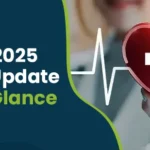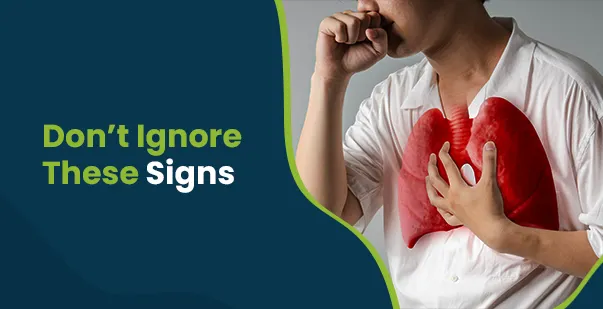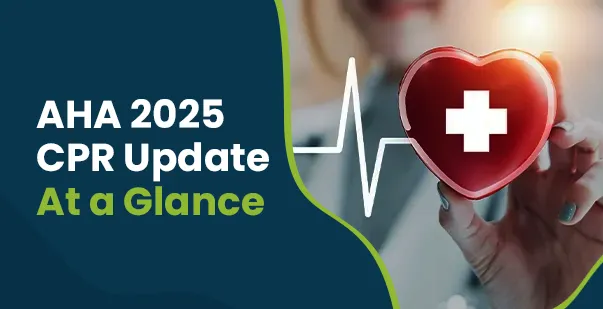Lung cancer is often associated with coughing, shortness of breath, or chest pain. But did you know it can also show up on your skin? In 2025, an estimated 226,650 new lung cancer cases are expected in the U.S., yet early symptoms that occur outside the lungs often go unnoticed. Have you ever wondered if cancer can cause itchy skin? In some cases, lung cancer can.
Persistent itching, unexplained rashes, or skin discoloration can sometimes be linked to underlying tumors. These signs don’t always mean cancer, but they shouldn’t be ignored.
Read on to learn which skin symptoms could signal something more serious.
What Is Lung Cancer?
Lung cancer happens when abnormal cells in the lungs grow uncontrollably, forming tumors that disrupt normal breathing. It’s one of the most common cancers, affecting both smokers and non-smokers. While smoking is a major cause, exposure to air pollution, asbestos, or even family history can increase the risk. Common signs include a lingering cough, chest pain, or feeling out of breath, but did you know your skin might also tell a story?
In some cases, lung cancer can cause changes like thickened or darkened patches of skin, small bumps, or even clubbing, where the fingertips round and the nails curve. These subtle changes may be your body’s way of signalling a deeper issue.
So, what kind of skin changes should you watch out for?
9 Lung Cancer Symptoms Appearing on the Skin
Your skin can reveal more about your health than you think. You can even identify what does lung cancer look like. From unexplained rashes to changes in sweating, your body might be trying to warn you. Here are nine skin symptoms you shouldn’t ignore:
1. Yellow Skin (Jaundice)
If you notice your skin or the whites of your eyes turning yellow, it could be due to jaundice. This condition happens when bilirubin builds up in the bloodstream. Bilirubin is a yellow pigment produced when red blood cells break down, and normally, the liver processes and removes it. However, when lung cancer spreads to the liver or pancreas, it can impair bile flow and lead to a yellow tint in the skin and eyes.
A study published on Biomed Central has shown that liver metastases are present in approximately 16% of lung cancer cases at diagnosis. Other symptoms that may be related to jaundice include:
- Dark urine (due to excess bilirubin excretion)
- Pale stools (due to lack of bile reaching the intestines)
- Persistent itching (caused by bile salt accumulation in the skin)
Yellow skin might mean lung cancer has reached your liver.
If you experience these changes, consult a doctor, as they may indicate an advanced stage of cancer.
2. Lumps on the Skin
Lung cancer can sometimes spread to the skin through the bloodstream or lymphatic system. When this happens, it can form firm, painless lumps on areas like the chest, neck, abdomen, or scalp.
These lumps, called skin metastases, usually feel like hard nodules beneath the skin. They can vary in size and color. Some may be red, pink, or flesh-colored. In some cases, these lumps may break open or form sores. Skin metastases are rare but are a sign that lung cancer has spread beyond the lungs. This means the cancer is in an advanced stage. Research by PubMed Central suggests that skin metastases occur in about 1% to 12% of lung cancer patients.
3. Itchy Skin
Persistent itching can sometimes be an early or indirect symptom of lung cancer. When lung cancer spreads to the liver, it can affect how bile is processed. This may cause bile salts to build up in the bloodstream. These salts can settle in the skin, leading to itching (pruritus), even without a visible lung cancer rash.
Itching can also result from paraneoplastic syndromes. These happen when cancer cells release certain hormones or substances that affect the body. For example, hypercalcemia of malignancy occurs when lung cancer raises calcium levels in the blood. This can irritate the skin and nerves, causing itching. In some cases, lung cancer-related itching may also be caused by histamine release or nerve irritation linked to tumor growth.
4. Easy Bruising and Skin Thinning
Lung cancer, especially small cell lung cancer (SCLC), can sometimes cause a rare hormonal condition called Ectopic Cushing’s Syndrome (ECS). This happens when tumor cells produce too much ACTH, a hormone that tells the adrenal glands to release large amounts of cortisol. High cortisol levels can weaken blood vessels and reduce skin elasticity. This makes the skin more fragile and prone to:
- Easy bruising, even with minimal trauma.
- Thinning skin that tears easily.
- Purple stretch marks, often on the abdomen.
Other skin-related signs of ECS may include acne and frequent skin infections. ECS affects approximately 1% to 5% of patients with SCLC. People with ECS may also develop facial puffiness (moon face), muscle weakness, weight gain, and high blood pressure.
It is important to note that ECS is caused by hormonal changes related to lung cancer, not the direct spread of cancer cells.
5. Lung Cancer Face Swelling and Redness (Superior Vena Cava Syndrome)
Waking up with an unexplained swollen and red face could be a sign of Superior Vena Cava Syndrome (SVCS). This condition occurs when a lung tumor presses on the superior vena cava, the large vein that carries blood from the upper body to the heart. Lung cancer, especially small cell lung cancer (SCLC), is a common cause of SVCS because the vein is closer to the chest. When the superior vena cava is compressed, it disrupts blood flow, leading to:
- Lung cancer face swelling and redness.
- A feeling of tightness in the skin.
- Swelling in the neck, arms, and upper chest.
- Difficulty breathing.
- Headaches or dizziness caused by reduced blood flow to the brain.
SVCS is a medical emergency because it can worsen quickly. SVCS is observed in a significant number of lung cancer patients, with an estimated 15,000 cases annually in the United States. Severe cases may affect breathing or cause brain swelling, which can become life-threatening. If you experience these symptoms, seek immediate medical attention.
6. Heliotrope Rash (Purple Discoloration Around the Eyes)
A heliotrope rash is a purplish-red discoloration around the eyes and eyelids. This lung cancer rash is often linked to dermatomyositis, an inflammatory muscle disease. Research shows that 20-25% of dermatomyositis cases are associated with cancer, including lung cancer. Cancer-related dermatomyositis is more common in older adults and smokers.
This autoimmune disease can develop months or years before lung cancer is diagnosed. Other symptoms include muscle weakness, fatigue, and pain. To diagnose dermatomyositis and its link to cancer, doctors may perform blood tests to check muscle enzymes, imaging studies, or even a muscle biopsy. If you develop a persistent purplish rash on the face, along with unexplained muscle weakness, it’s worth getting evaluated for underlying conditions.
7. Gottron Papules (Red Bumps on Knuckles and Joints)
Gottron papules are red, scaly bumps that usually show up on the knuckles, elbows, knees, or ankles. They’re a key sign of a condition called dermatomyositis, which, in some cases, happens because lung cancer triggers an autoimmune reaction. This means the immune system mistakenly attacks healthy skin and muscle tissues, causing long-term inflammation.
These bumps can be itchy, sore, or even crack and peel over time. They are often confused with conditions like eczema or psoriasis, which can delay the right diagnosis. If these bumps appear along with other symptoms like extreme tiredness, difficulty swallowing, or a persistent cough, doctors may need to do more tests to check for any hidden cancer.
8. Changes in Facial Sweating (Horner Syndrome)
If one side of your face stops sweating or appears noticeably drier than the other, it could be a sign of Horner syndrome, a condition caused by Pancoast tumors (lung tumors located at the top of the lungs).
These tumors can press on the nerves that control facial muscles and sweat glands, leading to asymmetrical sweating, drooping eyelids, and one eye may look smaller. Pancoast tumors are a rare type of lung cancer, found in 3-5% of cases. They can lead to Horner’s syndrome, showing how lung cancer can affect the body in different ways. Although Horner syndrome is rare, its presence often signals an advanced stage of lung cancer.
Master First Aid Skills
First Aid Certification course that prepares you for real-life situations.
9. Clubbing of Fingers and Nails
Clubbing is a condition where the fingertips become swollen, and the nails start curving around them. It usually develops gradually and is often linked to reduced oxygen levels in the blood, which can happen due to lung diseases, including lung cancer. This occurs because lung tumors can release chemicals that promote abnormal tissue growth, affecting the shape of the fingers and nails.
Other signs of clubbing include wider or spongy fingertips, increased nail curvature, and shiny skin around the nails. This condition is often painless but can indicate serious underlying health issues.
Read more: Hyperventilation: Causes, Treatments, and Prevention
Lesser-Known Skin Changes Caused by Lung Cancer and Its Treatment
Besides the big 9, there are other weird ways your skin might react to lung cancer or its treatment. Lung cancer can also cause changes in the skin, either from the disease itself or as side effects of treatment. Some of these changes might seem unusual or unrelated, but could provide important clues about your health. Here are some lesser-known skin-related symptoms to watch for:
Darkened or Thickened Skin (Acanthosis Nigricans)
Sometimes, lung cancer can cause hormonal changes in the body. These changes may lead to a skin condition called acanthosis nigricans. It causes dark, velvety patches of skin to develop, usually in body folds like the neck, armpits, or groin. The affected skin may feel thicker than usual and can sometimes itch or feel uncomfortable. While this condition can have other causes, such as obesity or diabetes, it’s also linked to certain cancers, including lung cancer.
Hives, Rashes, and Skin Inflammation
Some people with lung cancer get red, swollen skin or hives (also called urticaria). Hives usually show up suddenly and can be caused by the cancer itself or as a reaction to treatment.
Immunotherapy is now a common lung cancer treatment, and drugs like Keytruda (pembrolizumab) and Opdivo (nivolumab) are used. Studies suggest that 10-15% of patients on immunotherapy experience skin inflammation (Cancer Immunology Research, 2023).
In addition, targeted therapy medications like Giotrif (afatinib), Iressa (gefitinib), and Tarceva (erlotinib) can cause an acne-like rash, usually appearing on the face, chest, or back. In some cases, this lung cancer rash may be painful or lead to skin peeling.
Excessive Dryness, Cracking, and Sensitivity
Many lung cancer treatments, including chemotherapy, radiation therapy, and targeted therapy, can cause severe dryness, flaking, and cracking of the skin. Radiation therapy and targeted therapy drugs, such as Iressa and Tarceva, are known to cause dry, itchy, and flaky skin in a significant number of patients.
In some cases, excessive dryness can lead to painful cracks that may bleed. EGFR inhibitors, a common type of targeted therapy, cause dry skin in over 50% of patients.
Bruising, Bleeding, and Tiny Red or Purple Spots
Chemotherapy can lower blood platelet levels and make the skin more prone to bruising or bleeding easily. Some targeted therapies, like Vargatef (nintedanib), can also cause tiny red or purple spots (petechiae) on the skin that resemble a rash.
Bluish Skin (Cyanosis)
Lung cancer can reduce oxygen levels in the blood. When oxygen levels drop too low, the skin, especially the lips, fingertips, and toes, may turn bluish or purplish, a condition known as cyanosis. This cancer skin discoloration is often a late-stage symptom and requires immediate medical attention.
Read more: What is Hypoxia: Key Symptoms and Warning Signals
Listen to Your Body: Catch Lung Cancer Early & Stay Prepared
Lung cancer is easier to treat when it’s caught early, but the signs aren’t always obvious. It’s not just a cough or trouble breathing; sometimes, your skin can give you clues, too. Unexplained itching, rashes, or changes in skin color could be signals that something’s wrong. If something feels off, don’t ignore it. Getting checked early can make a huge difference. Regular screenings and paying attention to small changes in your body can help catch lung cancer before it spreads.
As lung cancer can sometimes lead to breathing emergencies, knowing how to help in a crisis could save a life. CPR and AED training is a simple but powerful way to be prepared, not just for yourself, but for those around you. It’s one of those skills you hope you’ll never need, but you’ll be grateful to have!
First Aid Training Made Easy
Learn essential first aid care from anywhere with our online course
FAQs
- What Does Your Skin Look Like With Lung Cancer?
Lung cancer can cause dark, thick patches of skin, itchy rashes, or easy bruising. Some treatments make the skin dry, flaky, or red, like a sunburn. In later stages, lips and fingertips may turn blue due to low oxygen levels.
- What Are the Signs Your Body Is Fighting Lung Cancer?
Your body might show signs like constant coughing, feeling really tired, losing weight without trying, or having chest pain. You might also get fevers, night sweats, or skin rashes as your immune system reacts. Some people feel weak or dizzy as well.
- Do You Get a Lot of Mucus With Lung Cancer?
Yes, lung cancer can cause more mucus than usual, leading to a cough that brings up clear, yellow, or even bloody phlegm. This happens because tumors can block airways or irritate the lungs, making it harder to clear out mucus.
- What Are Some Unusual Symptoms of Lung Cancer?
Some surprising signs include fingertips getting rounder (clubbing), a raspy voice, swelling in the face or neck, and shoulder pain. Some people also get blood clots for no clear reason, or feel confused or dizzy if the cancer spreads to the brain.









